Hints on Tuning Your Guitar By Bill Tyers
One of the most important skills that you will learn as a musician is to tune your instrument. No matter how good your playing technique, whether you are just starting beginner guitar lessons or can shred with the best, if your instrument is not perfectly in tune your performance will not shine. Remember that tuning like all other aspects of learning an instrument takes time to master.
Tuning Methods
There are a number of tuning methods which may be used but I strongly suggest that you use the first method listed here and use a combination of the others for quick on the fly adjustments when performing.
Electronic Tuner
Because of the relative low cost of these devices I strongly recommend that if you do not own one now then go out and buy one immediately. They will save you many hassles and ensure that you ear develops along with your physical technique. The only drawback with a tuner is the fact that the string you are about to tune must be fairly close to pitch or it will give you readings of a fourth or fifth above or below. If you feel that you may have troubles initially, take your guitar along when you purchase your tuner and have the retailer tune it for you. Once it is in pitch, continually checking the pitch will keep the guitar within a semitone enabling you to keep it perfectly in tune.
Relative Tuning
If you are not playing with other fixed pitch instruments such as piano, organ, synthesiser, a slight variation from concert pitch (eg. A= 440) is not important as long as the guitar is in tune with itself. Here is a method that you may use:
Assume that the 6th string is in tune.
Hold down the note on the 5th fret of the 6th string with your left hand. This note will now become your reference for tuning the open 5th string. Adjust the pitch of the 5th string to match your reference note.
Next repeat this procedure on the 5th string. The 5th fret note on the 5th string will now be your reference for tuning the open 4th string.
Repeat this procedure on the 4th string. Fifth fret note on the 4th string should match your open 3rd string.
Now this is where the system changes! Hold down the 4th fret on the 3rd string and use it as your reference to tune the 2nd string open.
For your final string we go back to our initial formula and tune the 5th fret of the 2nd string to the open first string.
Harmonics Method
This method is not recommended as it is not accurate because of our tempered scale system. In extremely simplistic terms some notes in our diatonic chromatic scale are slightly out of pitch to enable us the facility to play in all 24 major and minor keys. Therefore the harmonic notes at the 5th and 7th frets on the guitar will give you mean temperament not the required equal temperament.
To play a harmonic first start at the 12th fret, 5th string (this is usually the easiest place to get a clear tone). Lightly touch the string with your left hand exactly over the 12 fret (do not press down and fret the note) and pluck the 5th string with your right hand.
Once the string is vibrating take your hands from the strings so you do not deaden the vibrations. The note you will produce here is one octave above the open string. When you are competent at producing harmonics at the 12th fret proceed to the 5th and 7th frets.
Okay so here is the harmonic method:
Play the 5th fret harmonic on the 6th string and use
it as a reference to tune the 7th fret harmonic on the 5th string.
Repeat this procedure on the 5th string. The 5th fret
harmonic provides the reference for the 7th fret harmonic on the 4th
string.
Repeat to tune the 3rd string.
Now for the odd man out. The second string can not
be tuned from the 3rd string so we usually provide the 2nd string reference
tone from the harmonic on the 7th fret of the 6th string to the open
natural 2nd string. Note the 2nd string is not a harmonic tone.
Finally the 1st string 7th fret harmonic is referenced from the 5th fret harmonic on the 2nd string.
Note: Harmonics are playable at the 5th, 7th and 12th frets of the guitar with a weaker harmonic coming from between the 4th and 5th frets.
Remember that harmonic tuning should only be used as a quick check method and not become your preferred option.


SHARE THIS PAGE!